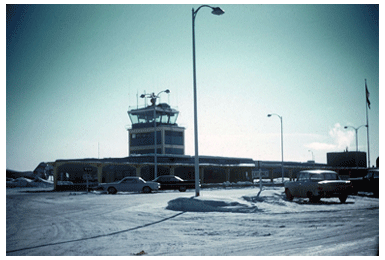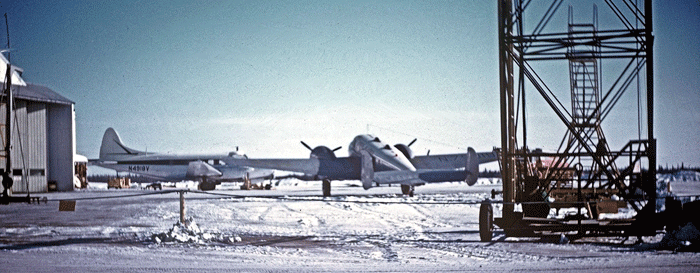History of Fairbanks International Airport

Early aviators in the Alaskan Territory frequently made do without prepared landing strips, putting their airplane down wherever air transportation was required. Aviation service in the Fairbanks area was initiated at an airfield known as Weeks Field, or Weeks Ball Park, in 1923. This multi-use facility gained importance in the community and throughout the Alaska aviation system from the time that Carl Ben Eielson first flew into Fairbanks in 1923 to start Alaskan Airways. A majority of the area's general aviation and commercial air traffic was accommodated here through mid-century, though air carrier aircraft used Ladd Air Force Base, today referred to as Fort Wainwright. Plans coalesced in 1948 for development of a new facility - Fairbanks International Airport. Construction was authorized by Congress that year. Operations were shifted to the new airport in 1951, though minimal facilities and no terminal building were then available. Air carriers used temporary structures until completion of the passenger terminal building in 1954.
This site, still held today, is located approximately four miles west from the urban center of Fairbanks, just north of the confluence of the Chena and Tanana Rivers. Weeks Field is now a residential area.
The airport was under the charge of the federal government from its opening until Alaska was granted statehood in 1959. Ownership and responsibility for operation were then transferred to the State of Alaska, Department of Public Works, then to the Department of Transportation and Public Facilities, under whose charge the facility remains today.
Development at the airport in past decades has been commensurate with growth in the community. Two notable traffic increases has occurred. First, a surge in passenger and enplaned cargo volumes and corresponding aircraft operations occurred in the years 1974 through 1977, the time when the Trans-Alaska Pipeline System was under construction. Second, traffic at the airport changed in character as international air cargo flights began refueling at Fairbanks in 1979. Japan Airlines and Korean Airlines began service stops on cargo flights in May of that year. Fairbanks became an attractive option because of fuel availability. Use of Boeing 747, McDonnell Douglas DC-10, and McDonnell Douglas DC-8 all-cargo aircraft by these carriers changed the nature of operations at the airport. These larger, heavier aircraft place a greater demand on the infrastructure of the airport. Scheduled international service was discontinued in the spring of 1984, but regularly scheduled serviceresumed in September of 1990 with the introduction of Lufthansa Cargo to the airport.
Notable facility developments have occurred on the air side and land side in the last two decades. The greatest capacity improvements have come with the construction in 1971 of a general aviation runway, 1R-19L, parallel to the primary runway, and a major passenger terminal expansion in 1984.

About FAI
- About FAI
- Flight Lines Newsletter
- News, Public Notices, & Press
- Employment Opportunities
- Mission, Values and Goals
- Aircraft Noise
- Airport Contacts
- Airport History
- Airport Layout Plan
- Airport Emergency Plan
- Airport Tarmac Delay Plan
6450 Airport Way
Fairbanks, Alaska 99709


